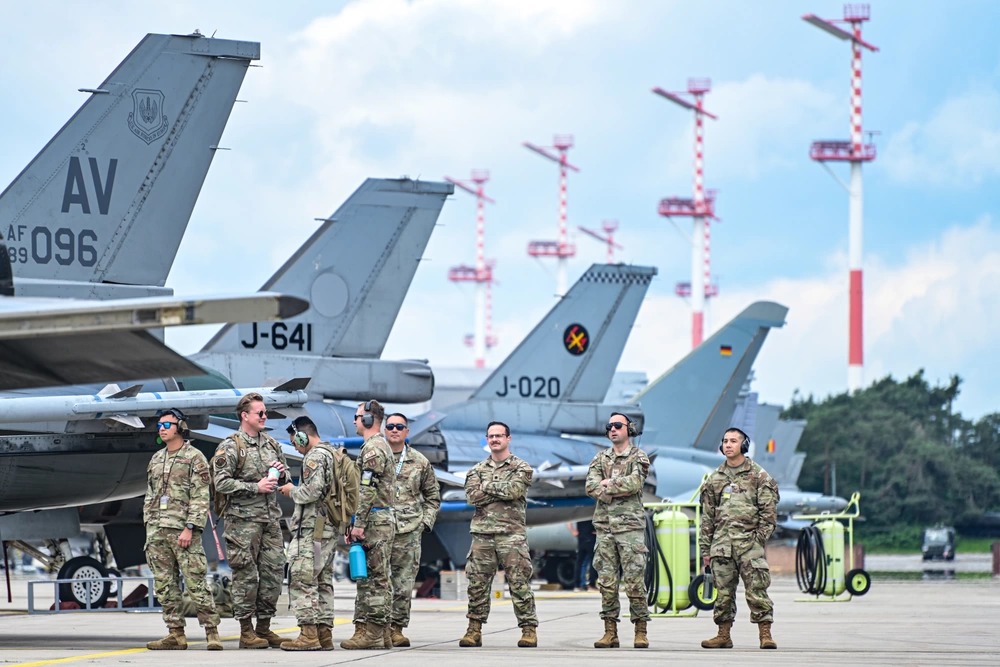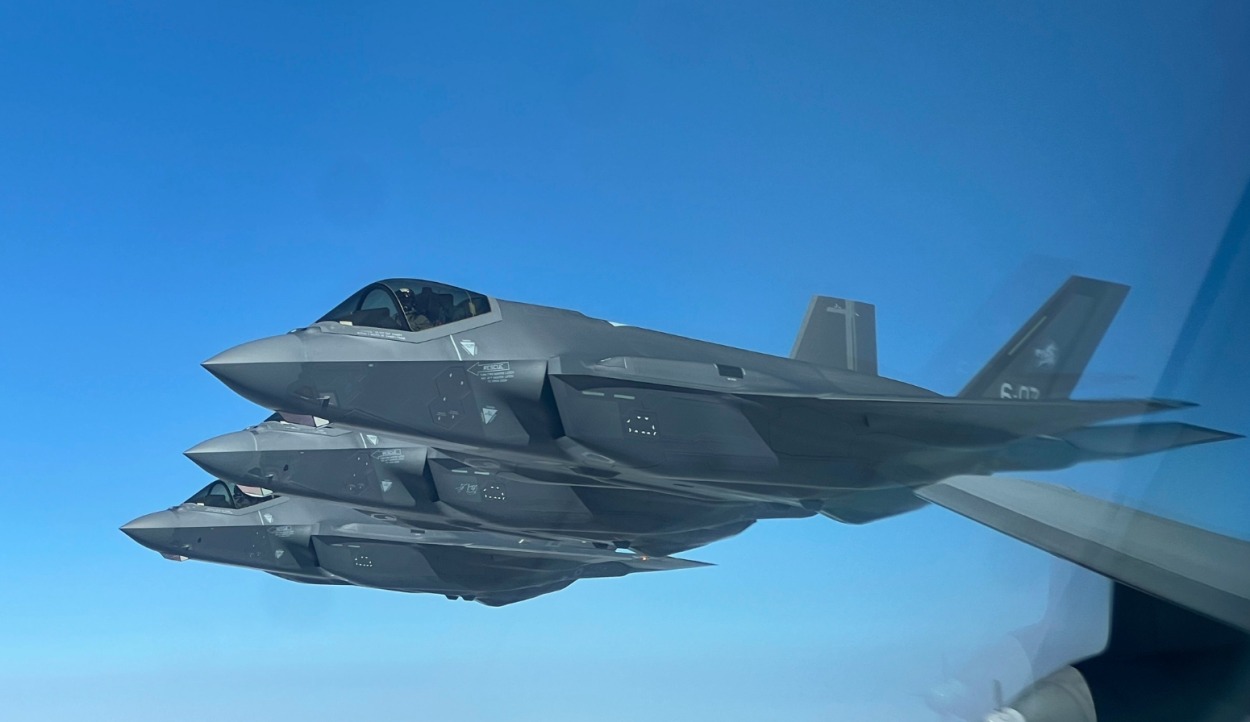Thirty-seven fighter aircraft, including fourth and fifth-generation models, representing nine NATO nations, recently participated in High-G aerial combat drills at Ramstein Air Base.
The first-of-its-kind event, hosted by the US Air Force in Europe. Africa (USAFE-AFAFRICA) on June 6, centered on refining basic fighter maneuvers (BFM).
The “Ramstein 1v1” event brought pilots from the US, United Kingdom, Norway, Netherlands, Belgium, Denmark, Finland, France, and Germany for a full day of basic fighter maneuvers (BFM), commonly known as “dogfighting.”
This competition highlighted rapid decision-making and sharp responses to adversaries, where split-second moves could determine life or death. The participating aircraft included F-35A Lightning IIs, F-16 Fighting Falcons, Eurofighter Typhoons, French Rafales, F/A-18 Hornets, and A-4 Skyhawks.
The exercise marked a significant milestone for US Air Forces in Europe, transforming Ramstein, typically a military airlift hub, into a fighter base for the day.
“Basic fighter maneuvering, sometimes called dogfighting, is a foundational skill set for fighter pilots,” said Lt. Col. Michael Loringer, US Air Forces in Europe: Air Forces Africa chief of weapons and tactics.

“It tests a pilot’s reaction time, physical stamina, and situational awareness. BFM is a coveted and timeless skillset, dating back to the first fighter pilots of World War I. There is no better way to build trust in a pilot’s aircraft or a pilot’s skills than to engage in a one-on-one BFM fight,” Loringer added.
Apart from offering a platform to showcase their abilities in an unconventional environment, the exercise fostered camaraderie and unity among allies by facilitating the exchange of tactics, techniques, and experiences, thus reinforcing NATO’s shared determination.
Further, it served as a valuable opportunity for the US and its allies to glean insights from each other, nurturing teamwork in a controlled setting and improving communication and interoperability.
The US Air Force said, “Ramstein 1v1 is a prime example of the 86th AW mission: defend U.S. interests, project power, and enable the Global Gateway. Exercises like Ramstein 1v1 not only strengthen the Global Gateway but also boost combat readiness among participating nations and their ability to swiftly respond to emerging threats in the Euro-Atlantic region.”
Navigating The Challenges
The intense 1v1 aerial battles push both aircraft and pilots to their limits, highlighting the extreme physical and technical demands of modern air combat.
Modern fighter jets, capable of reaching speeds over 1,500 miles per hour, can exert forces up to nine times the force of gravity, or 9 Gs, on their pilots. At such high acceleration, the human body faces immense challenges.
The force can overwhelm the heart’s ability to pump blood to the brain, potentially causing pilots to black out within seconds if not properly moderated.
“In a fighter jet, you’re sweating, you’re breathing through an inch-wide oxygen tube, balancing a gamut of controls and devices, all the while pushing your body to its absolute limits,” explained Col. (ret.) Cesar “Rico.” Rodriguez, a former United States Air Force A-10 Thunderbolt II and F-15 Eagle pilot, was at the event. “The threat of passing out at the controls is incredibly real.”
Rodriguez, known for downing three Mikoyan-Gurevich MiG-21s, emphasized the grueling conditions in a fighter jet cockpit. He stressed the importance of humility in fighter pilots, stating that the best pilots continuously seek improvement.

He noted the perpetual evolution in mastering aircraft and maneuvers, highlighting the readiness displayed in joint-nation exercises like the one held at Ramstein Air Base, Germany.
The teamwork showcased at Ramstein 1v1 was further evidenced as US Airmen stationed at RAF Lakenheath, UK, provided maintenance support for the Royal Norwegian Air Force F-35A Lightning II jets, bolstering both US national security and NATO’s collective defense efforts.

“This event provided a prime opportunity to hone our skills, and it made a fun experience to build cooperation and camaraderie amongst all the participants,” Loringer said.
“We are not just NATO allies, but a community bound by genuine friendship and respect. I emphasize this point because successful military operations require exceptional teamwork, often critical to survival. And as a pilot, it boils down to trust. It’s crucial to trust your wingman,” Loringer added.
The exercise concluded with a symbolic piano burning, honoring fallen fighter pilots, echoing a tradition from World War II.
- Contact the author at ashishmichel(at)gmail.com
- Follow EurAsian Times on Google News




